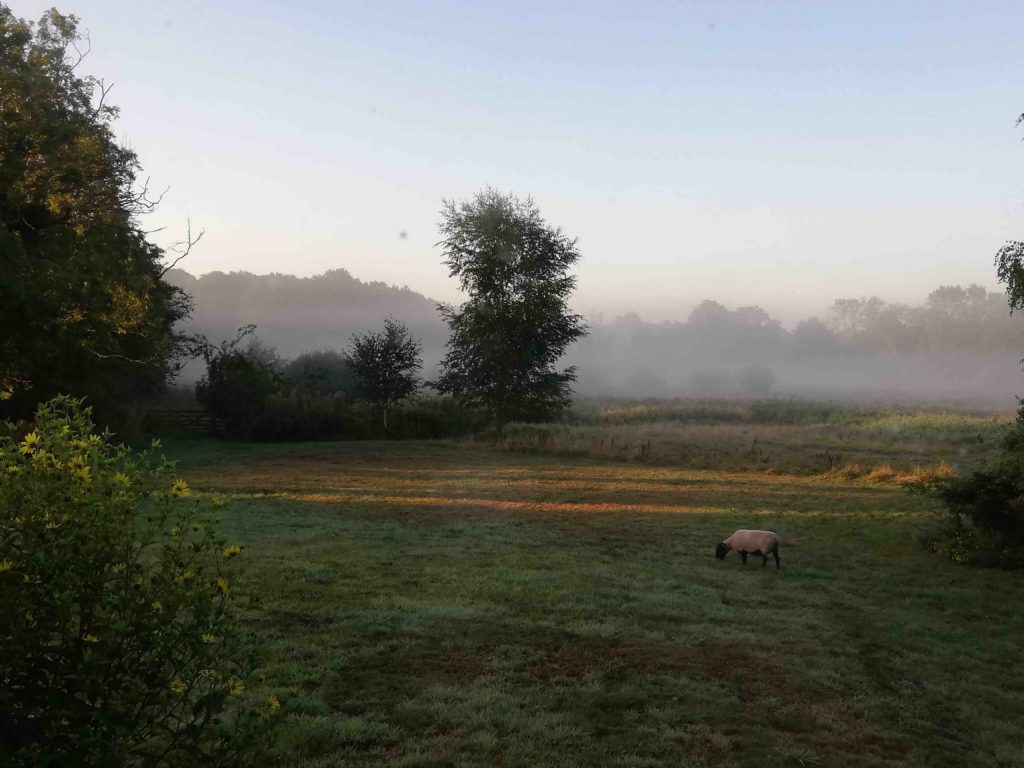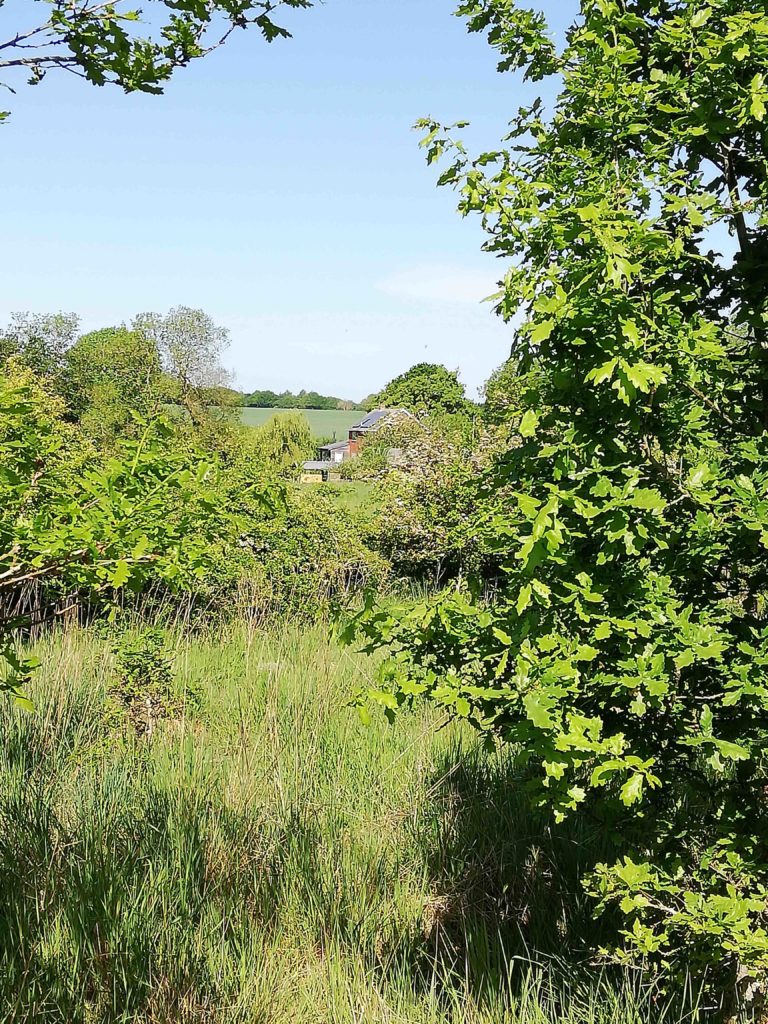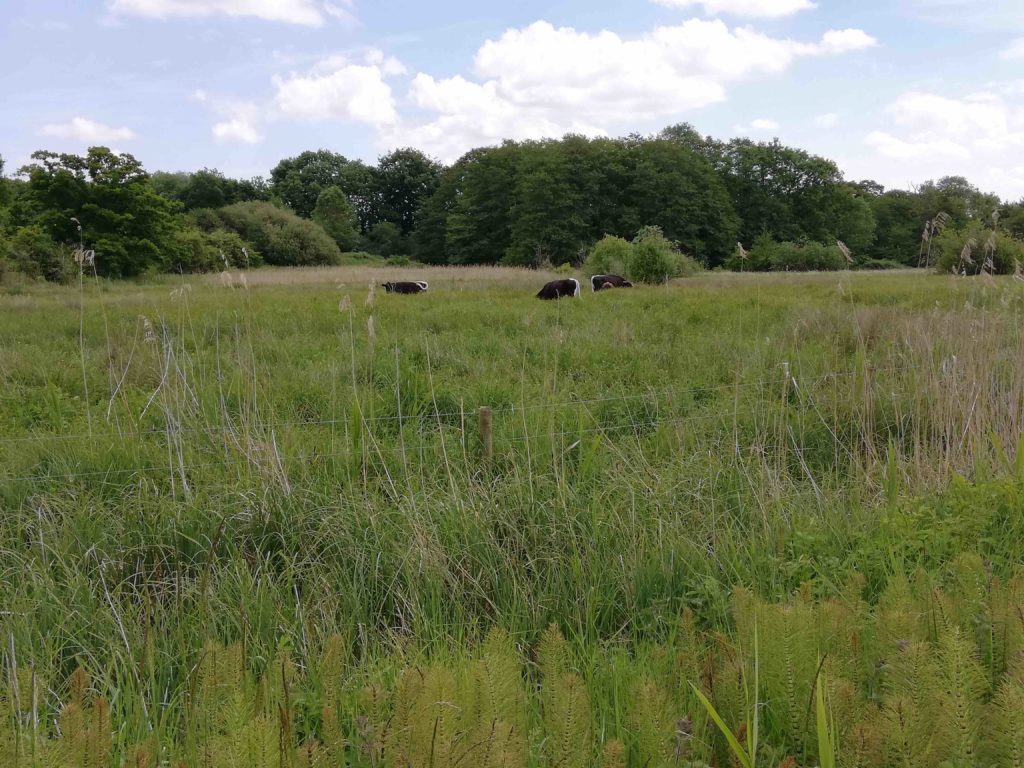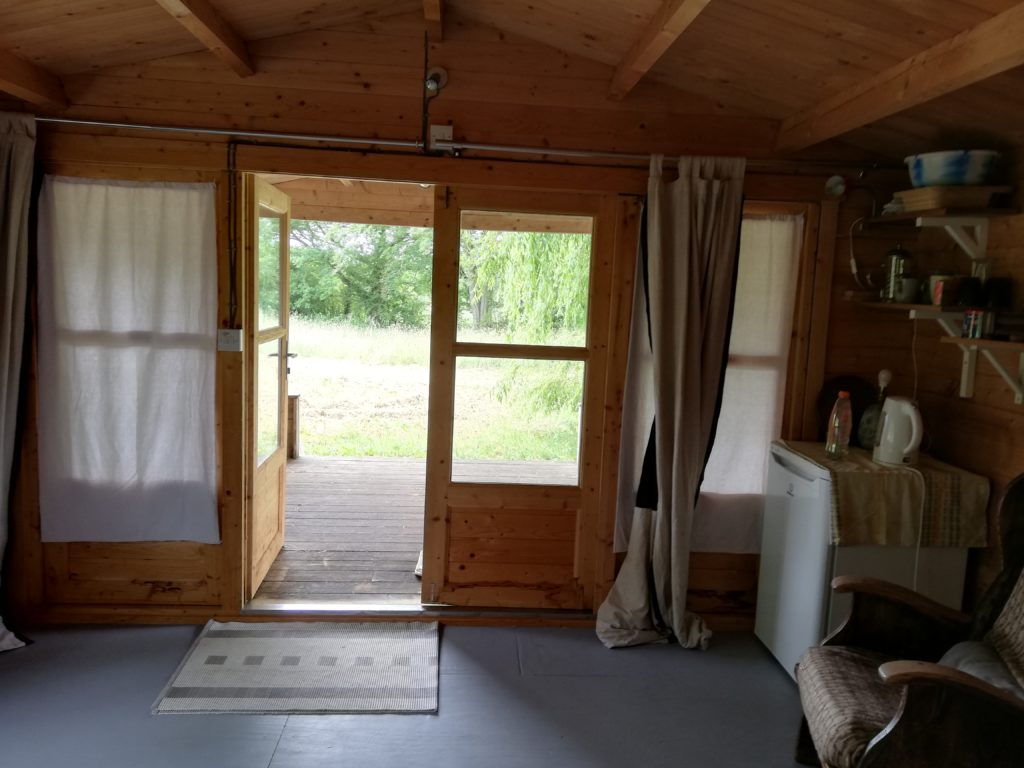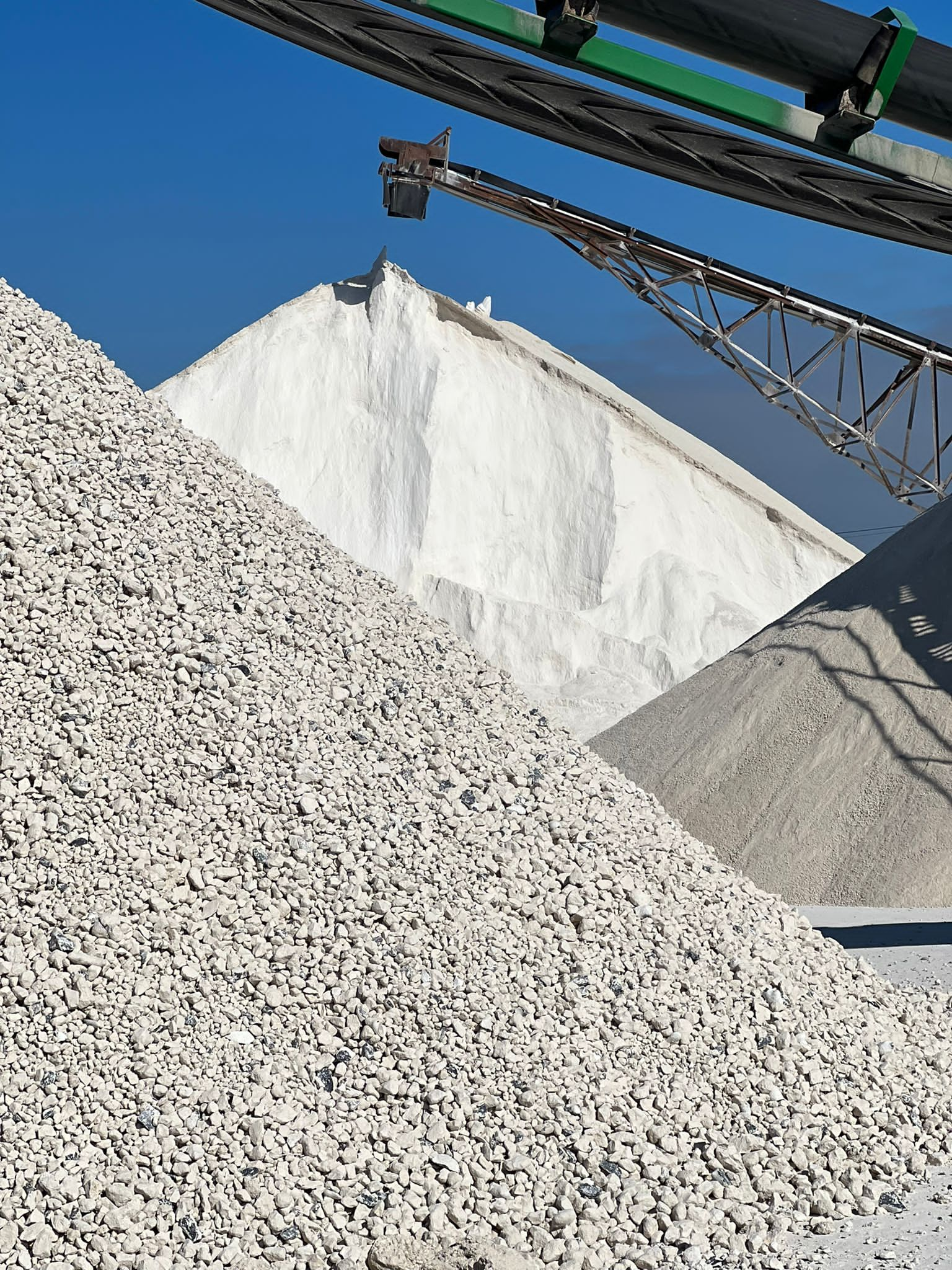Extraction 4: ‘Ground Up’ artistic residency
Taking the overall theme of Extraction for a fourth year, our title is ‘Ground Up’, intentionally with a double meaning. We want to continue to open out the themes to consider all possible aspects, from literal to lateral, from the physical to the more philosophical. Entry is available to artists working in any field.
This year we are asking artists to consider;
What is removed from the earth via extraction, excavation, dredging, mining, foraging, etc. and why?
The effects of extraction on any ecological system.
The best means to draw attention to extraction.
The selected artists for 2024 introduce themseves:
NIchola Streeten
she / her I’m a graphic novelist and comic scholar feminism and gathering as part of creative process with a methodology of friendship, and re-examining doing it yourself – as doing it ourselves
Rachel Wright
I’m a photographic artists exploring connections between human and more the human worlds
Liz Waugh McManus
I’m an interdisciplinary mixed multi media artist using a primary medium of glass, with film, sound, & interactive technologies to explore stories about the environment and other things
Katy Sayers Green
I’m interested in pressing global issues like climate change, biodiversity collapse, war and how they interact – but I start by looking at the natural world and go from the specific to the general
Rebecca Hearle
Predominately I’m a printmaker but I do other things & I’m interested in combining landscape and the self through a methodology of seeing with and being with
Helen Kilbride
My pronouns are she / her – I take a queer ecological point of view in my work. I’m exploring the boundaries between the intertidal zones, and the incoming tide; the boundary of the shore line, soil, skin. My mentor is Rachel Carson who has written the sea trilogy which I carry around with me and tell everybody about – I feel I am studying marine biology – I am also a film maker.
Carolina Wheeler
I’m an interdisciplinary artist, creator & educator focus on the human interlinked and chain connection – with raw materials, particularly those extracted and with migratory connections
Franek Wardynski
I have a fine art back ground, with art, multimedia, films, photography -interested in human impact on the planet and oil and extraction – and crystals
Julia Giles
At the moment I’m using found objects, natural and man-made, I use a range of media which changes depending on the particular project I am working on
Tamlin Lundberg
I’m a ceramic artist and forest school teacher I’m mostly exploring geology & landscape through walking and making some sculptural responses to that; I am interested in naturally foragad things, found objects and juxtaposed with the commercially extracted.
Sarah Horlock
I’m a ceramic artist and landscape archaeologist, My ceramics were quite influenced by my career in aerial photography and aerial mapping. More recently I’ve made ceramic sculptural objects – from creative research around Grimes Graves – using Cambridge Museum, and looking at flint knapping.
Jan-Micha Gamer
I’m a designer and artist and work in education – interested material cycles – Usually I work with electronic waste and natural materials – here I will work with salt
Myka Baum
I’m an interdisciplinary artist, I have quite a diverse background and use diverse methodologies – interested in relationships humans have with the environment and I’m focusing on subject of soil, through chromatography and lens based work
Lydia Halcrow
I work a lot with embodied practices and experimental recording devices to see how humans can leave trace in the landscape and I think of them as counter maps. I am thinking about counter cartography or alternative mapping -in quite fragile places
Sara Trillo
My output has been lately with textiles and ceramics. I’ve been obsessed with deneholes in the last few years – chalk mines of uncertain age – and I’m developing ideas and experiments with chalk as the outcome
James Aldridge
I work with people and places, using arts-based research and socially engaged methods. My current focus is on rivers, drawing on queer and neurodivergent experiences of wetlands, and the relationship between human and ecosystemic wellbeing.
Lizzie Kimbley
I’m a textile artist and designer based in Norwich. I work with woven textiles, natural dyes and basketry techniques -I want to be looking at how we use materials as a starting point – how we gather materials, repurposing and bio materials
Anna Marris
I specialise in printmaking and like to be experimental between traditional and contemporary methods and I go between art, science and technology and I’m exploring how the landscape is represented on on-line databases or archives
Katrin Spranger
I’m here to research materials for map-making and performance….. thinking about plastics and micro-plastics – and connected to extractionHelen Kilbride
Plus hosts
Veronica Sekules
John Plowman
Nicola Streeten
Helen Linsday
Programme
The entire GroundWork residency period runs for 6 weeks from 15 July to 2 September 2024. The research week is compulsory and is during the week of 22 July. In addition, we offer periods of 1 or 2 weeks which need not be taken consecutively. Please state your date preferences on the application form and we will do our best to accommodate
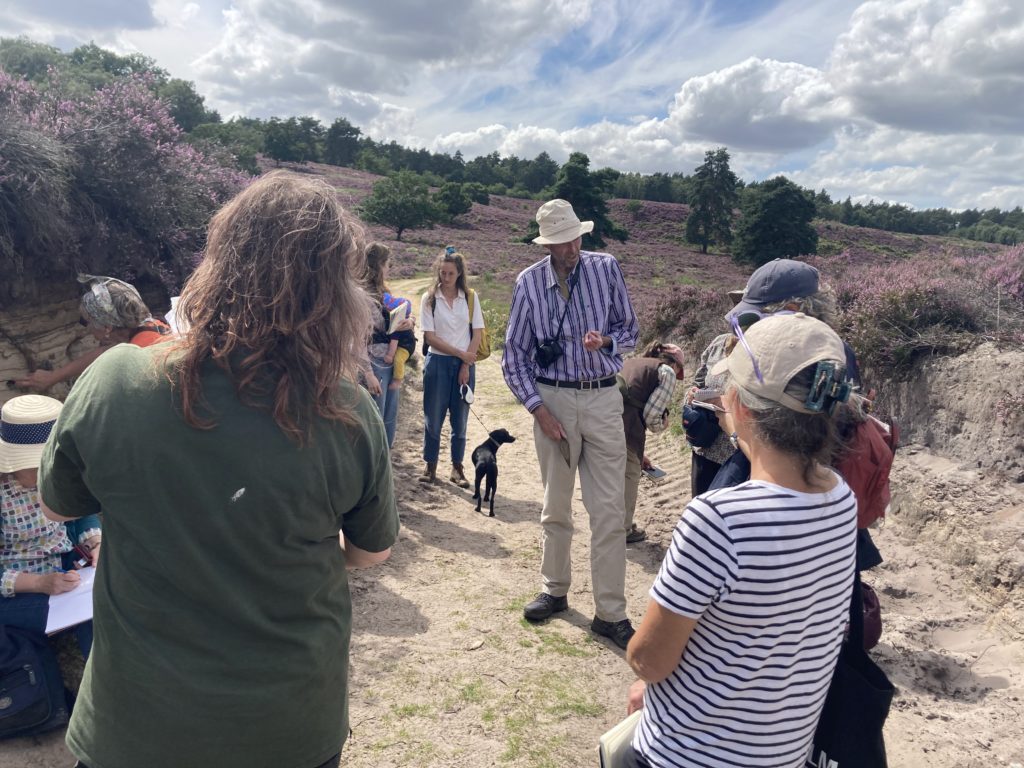
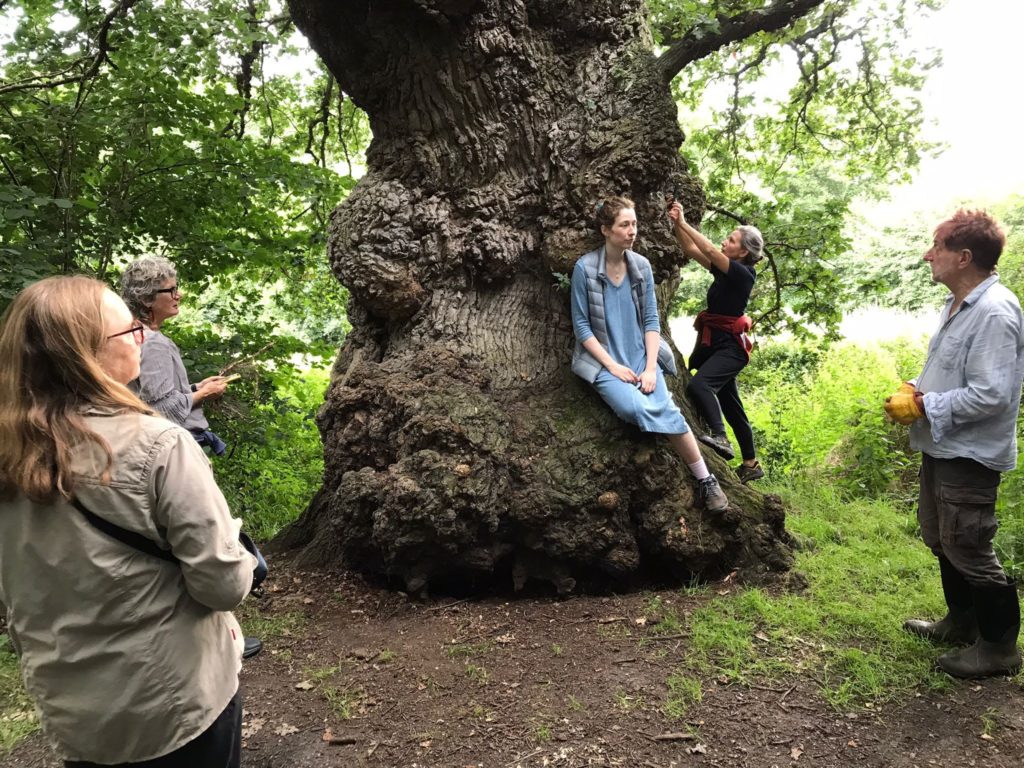
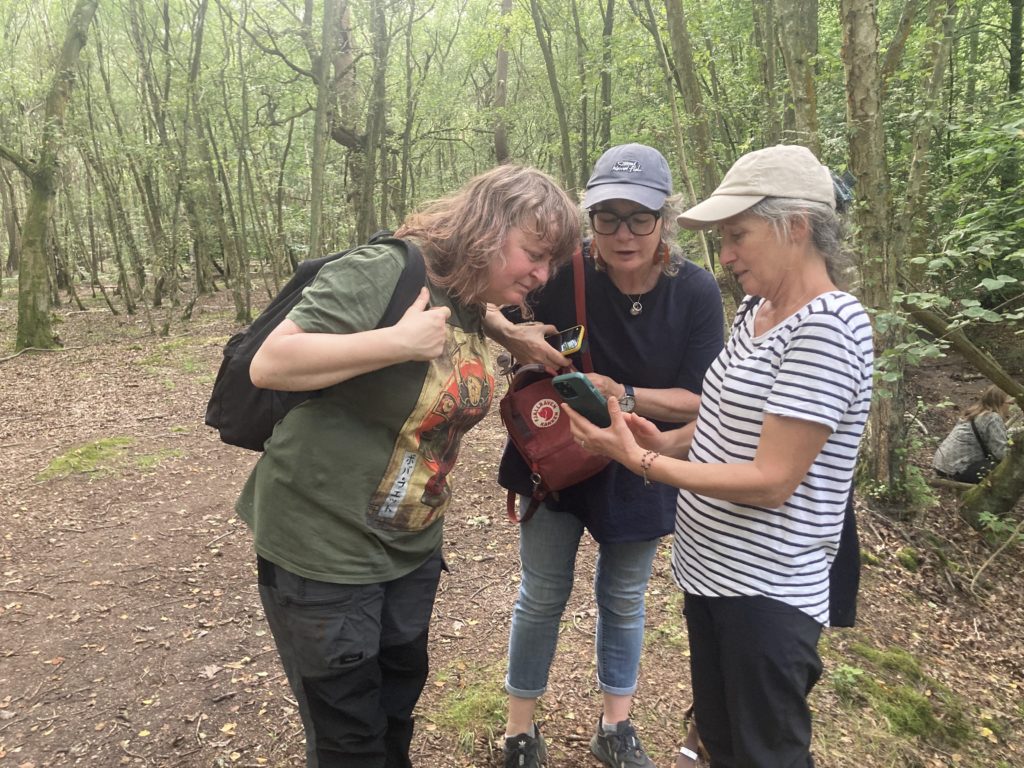
The Extraction theme
Almost everything we live in, on and among, has one way or another been extracted – aggregate, clay, stone, slate for house-building; sands, tar and stones for roads, oil, coal, gas for heating; metals for electronics, for pipes, for jewels. Water for drinking and washing, field irrigation and gardening. Soils such as peat can no longer be extracted, but can still be endangered by extractive farming practice involving water boring, or compression by heavy machinery. It is not all bad – a lot of extraction is necessary for our lives to continue in warmth, security and comfort. But there is a lot that needs watching in case it is excessive, driven by greed, or is unnecessary or replaceable with more environmentally sustainable alternatives. Artists can be at the forefront of new thinking, especially if we work together in our rich networks of practice and specialisms.
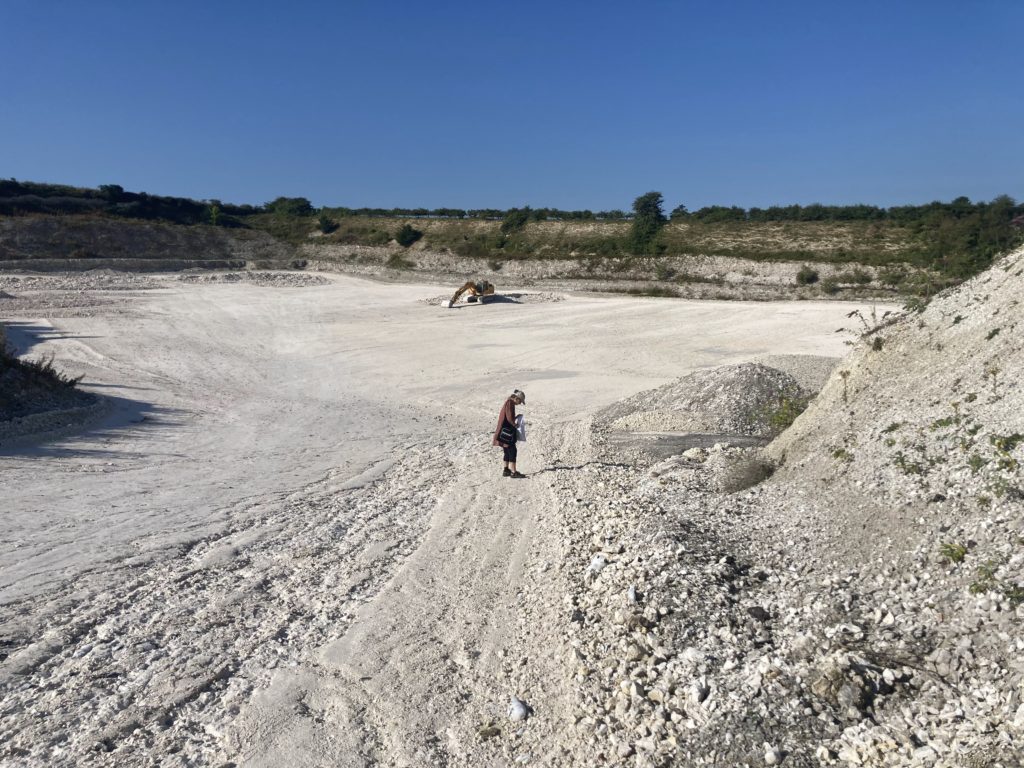
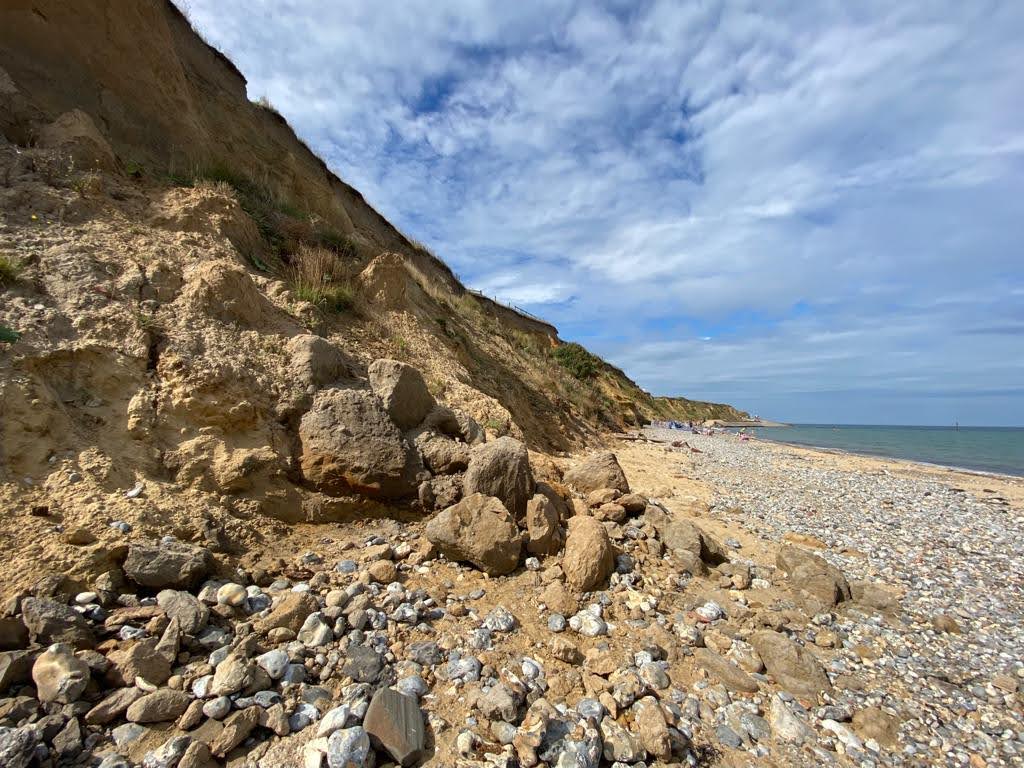
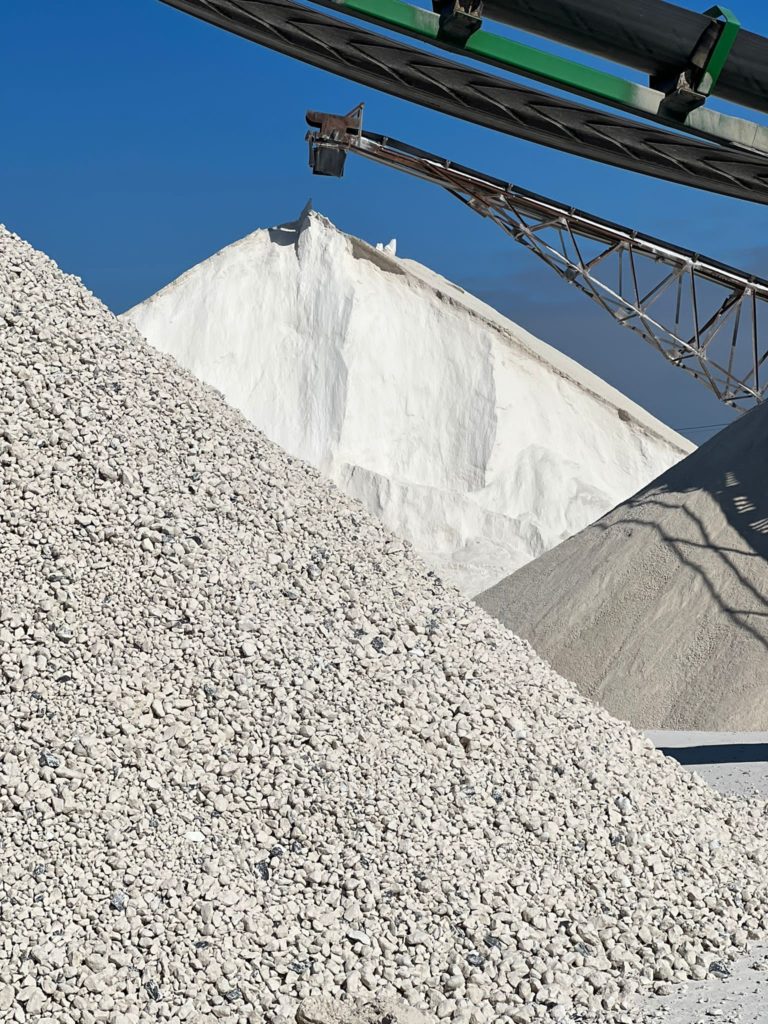
Residency benefits
We are working with a growing group of residency host partners and advisers. Our aim is to create a NetWork between us of resident artists, past and present, hosts, and advisers, so that together we can strengthen our practice and have a growing effect on the way we see the resources around us.
We cannot afford to offer a fee, but there are many benefits. All 3 residency partners and our advisers are pooling and sharing our resources so that we can provide the best experience for all. Everyone will get free accommodation, board and lodging – either sharing meals or being given the resources to buy food. It may be possible to help with transport, certainly we aim to pool transport resources for our fieldwork. There will be studio space and facilities of various kinds. We will try to ensure that there is much opportunity for skill-sharing and discussion.
An important key element is the preparatory work and the shared experience of field trips. This year we are making this a compulsory element, where we all explore local resources in the company of our expert advisers over the week of 22 July. We also all come together for meals and discussions at various points during the summer. Everyone has a chance to show selected results together at GroundWork Gallery’s project exhibition.
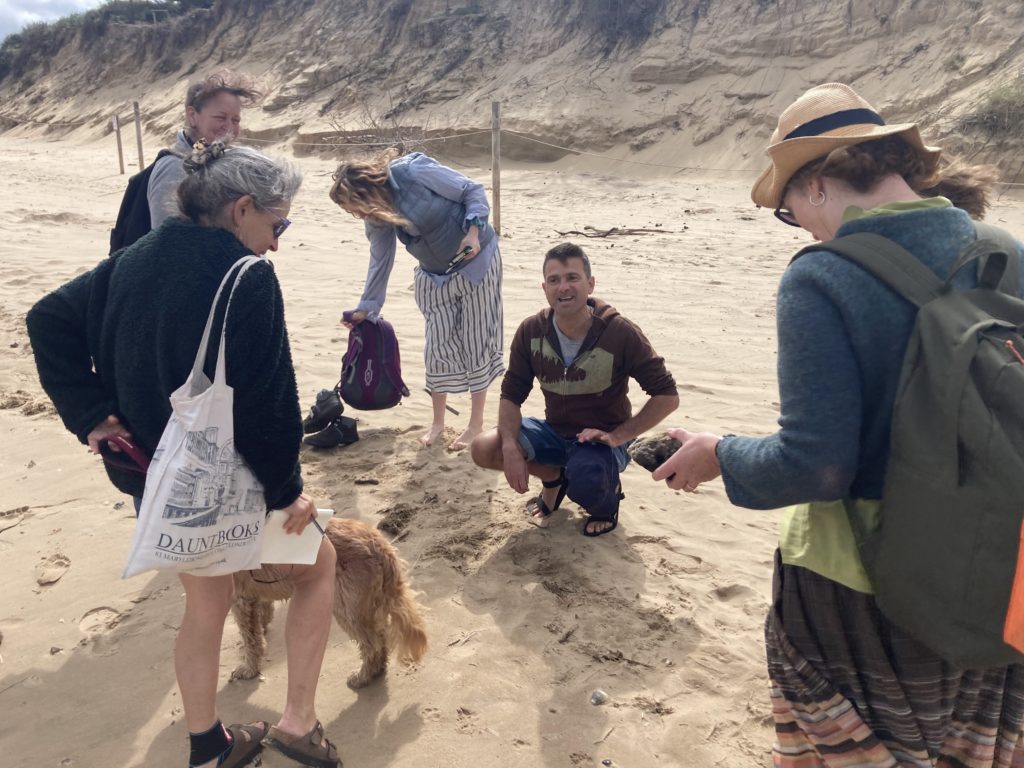
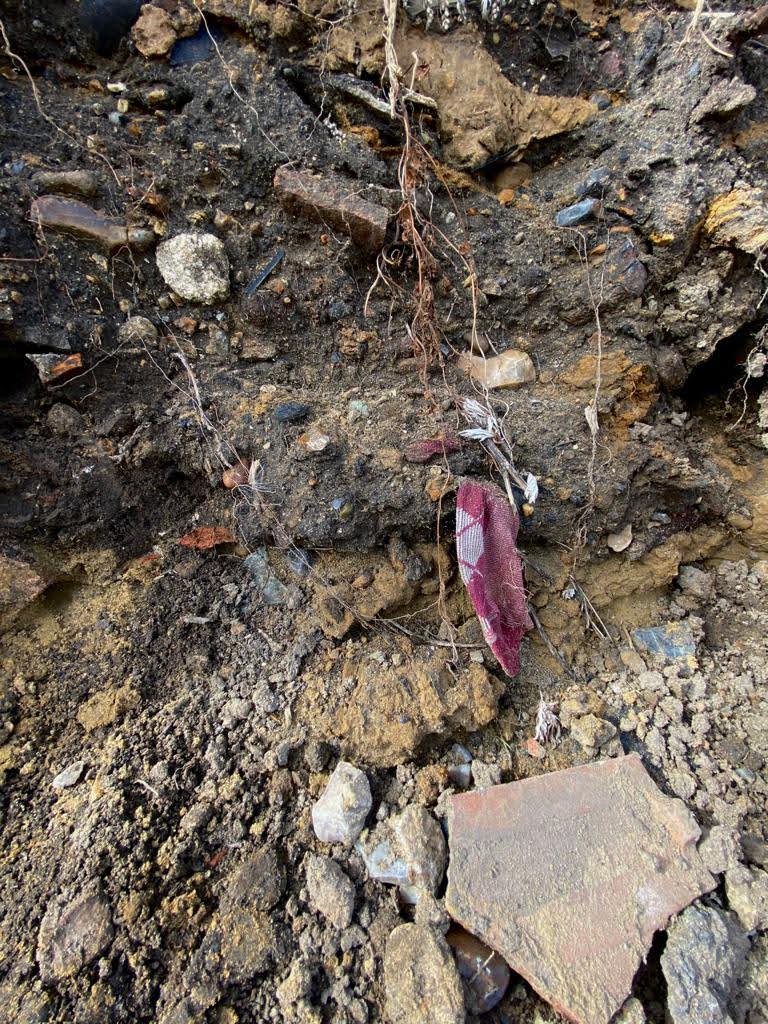
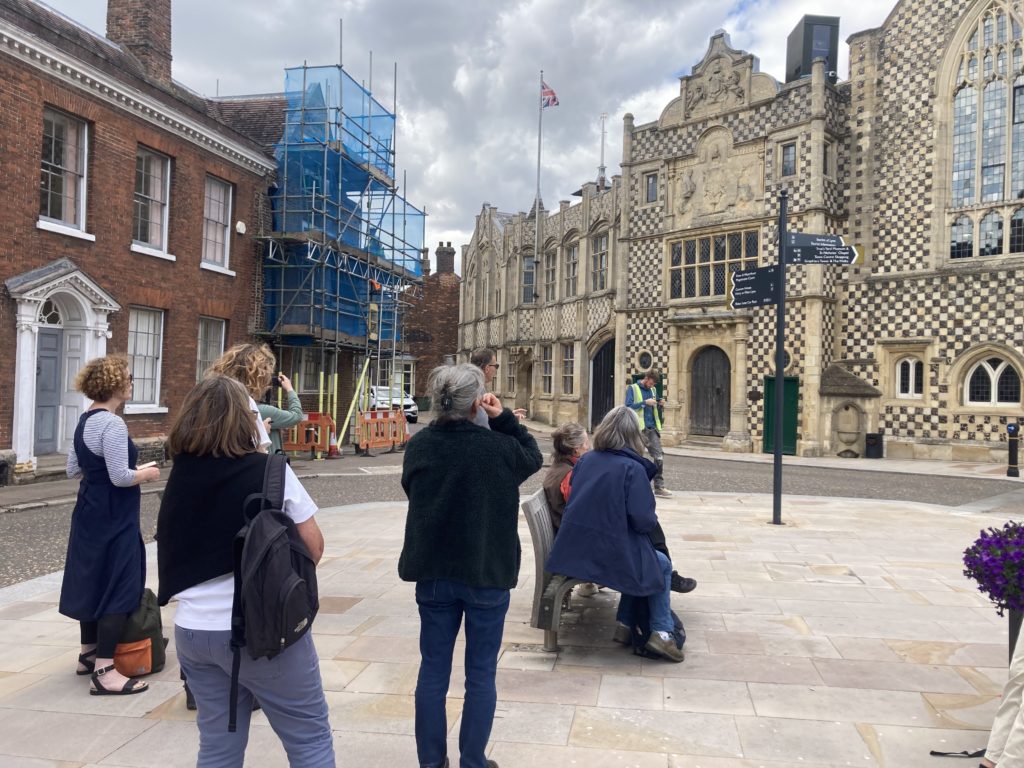
Exhibition
Alongside the residency period from July 15 to September 2 there will be an exhibition in the gallery downstairs featuring artist collective Heavy Water.
It is followed by the Ground Up exhibition from 11 October to December 14 for which each resident artist will be considered.
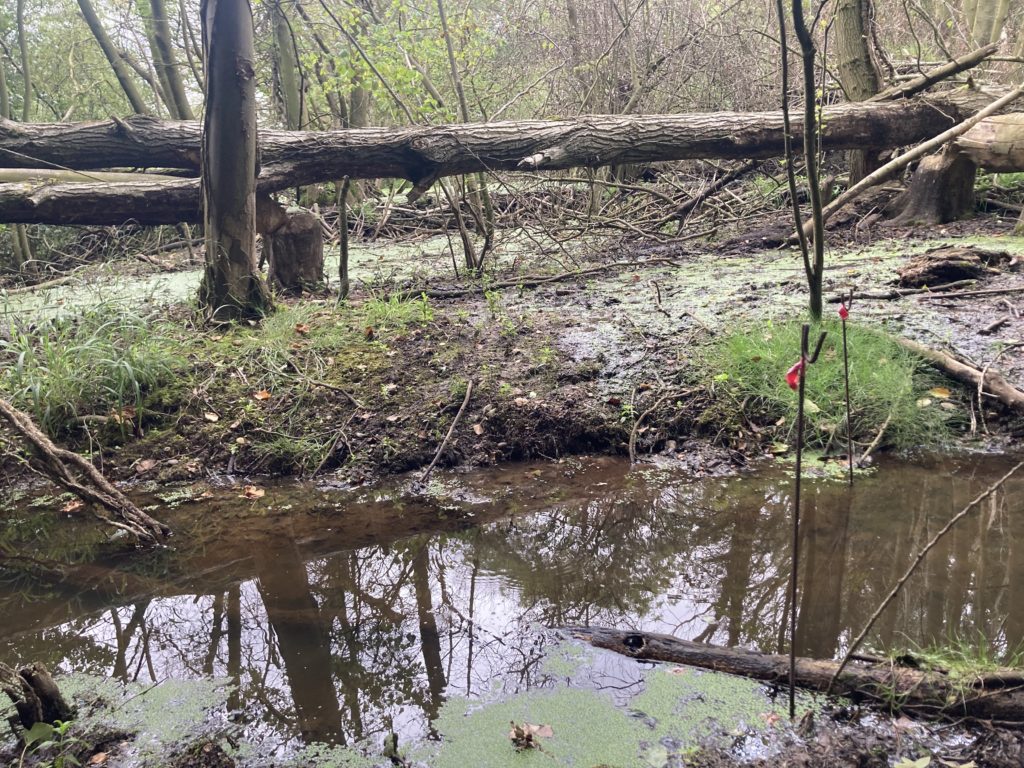
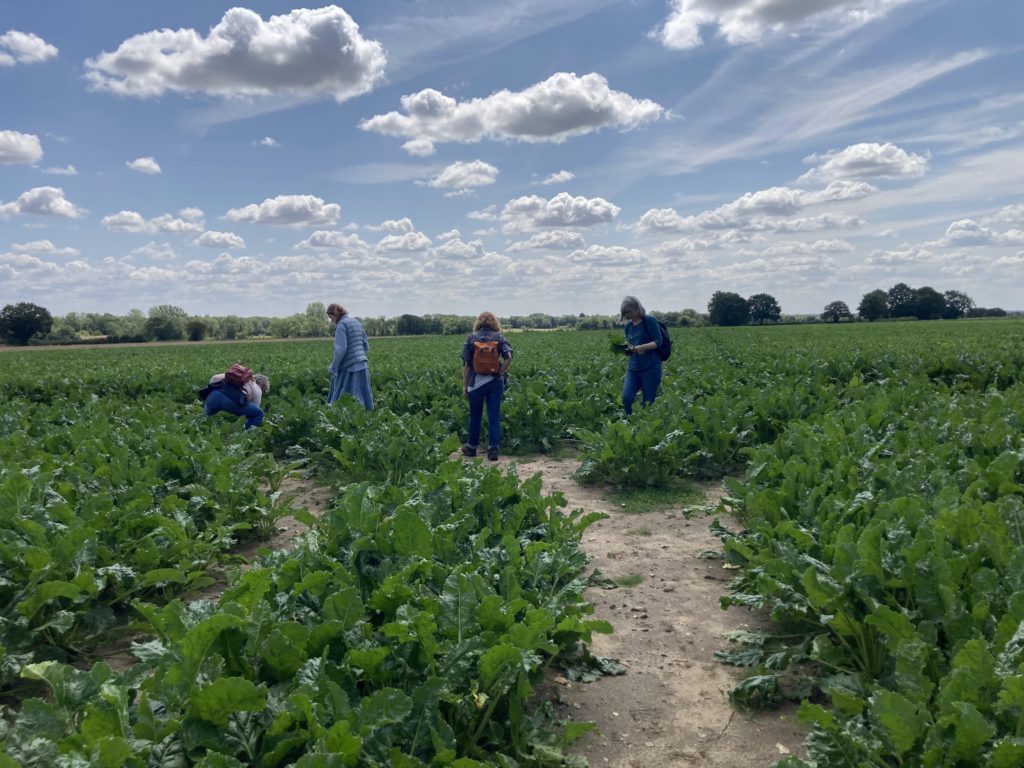
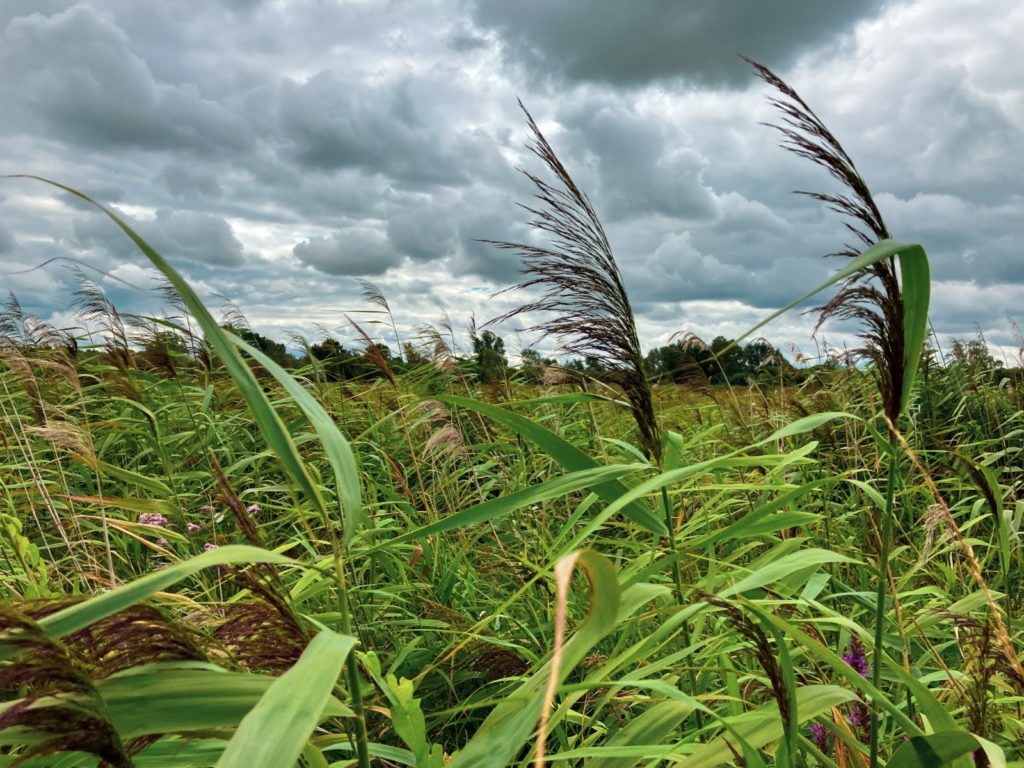
The Norfolk context
Because of the particular geography and ecology of this part of Norfolk, our extraction studies so far have concentrated on examining exactly that: the local landscape and its resources. We began in 2021 and 2022 to concentrate on those which have provided industry, such as aggregate, sand and stone digging and dredging. We have since begun to look at peat, and in more detail at waterways, specifically the rich but endangered chalk rivers of Norfolk. But there is just so much more to explore and consider, so much inspiration and so much of concern. See previous Extraction project pages for our summaries.
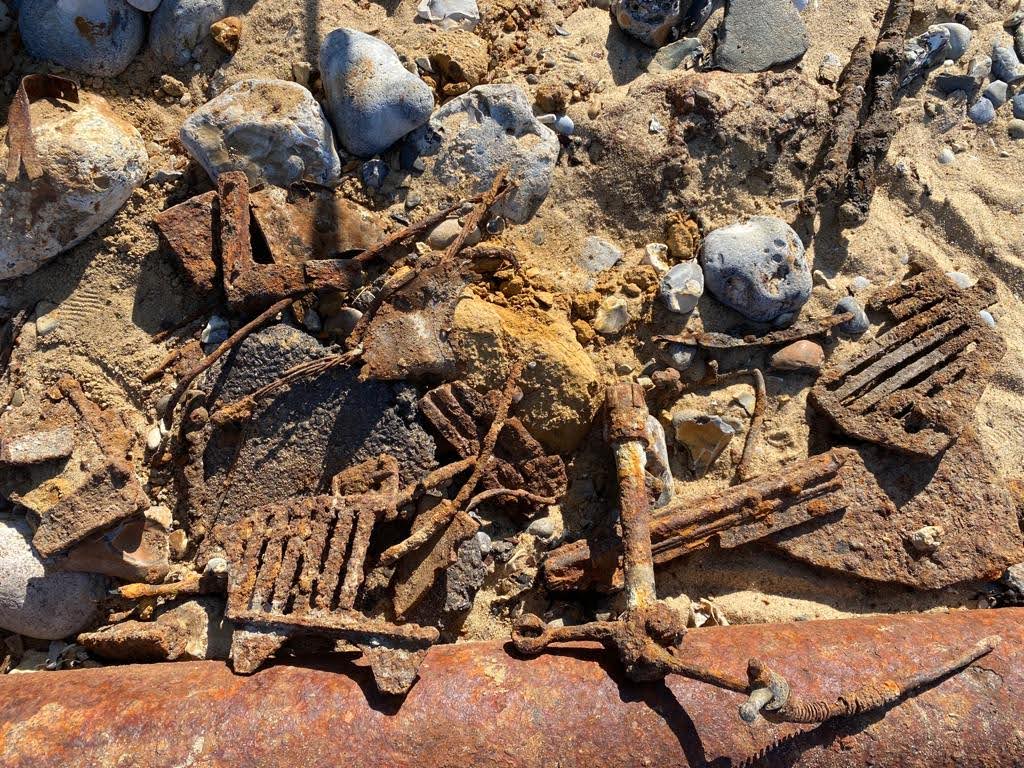
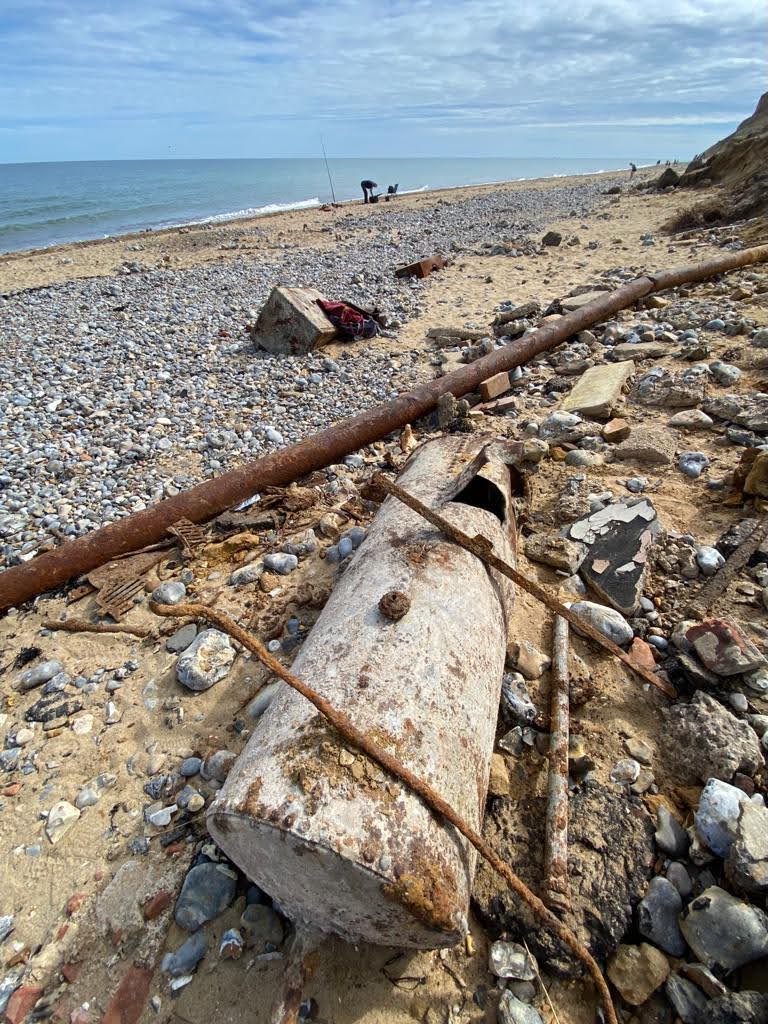
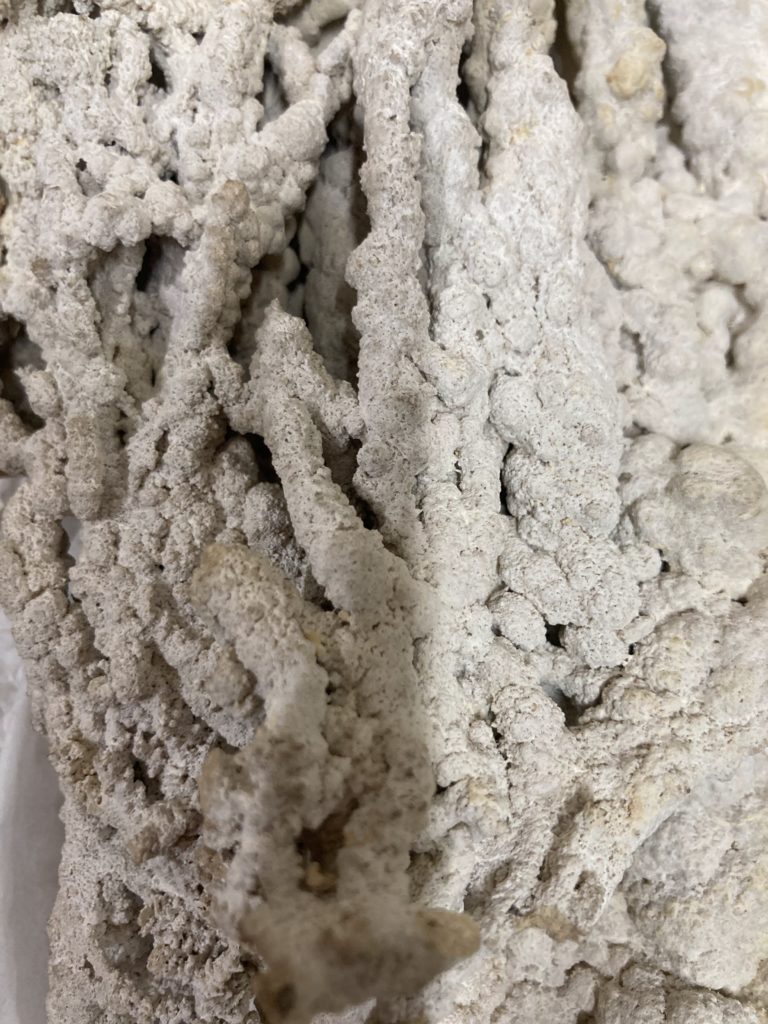
Artists’ responses from 2023
As our network of artists has grown larger, so have the benefits increased.
Here are a few snippets of feedback:
‘We gathered as singular artists all unknown to one another with very different practices and intentions and have emerged as a cohesive group with shared ideas and at least one key project to collaborate on.’
‘I have come away with a wonderful source of ideas and plans for further work based on the visits and discussions we had during those weeks.’
‘Participating in the Ground Work Gallery Extraction Residency has been critical in the development of my practice.’
‘Collaborating with the residency artists and sharing expertise on ceramics, pigments and materials has been brilliant, as has thinking more deeply about the type of materials and methodologies I use in my practice. A 5 * experience.’
‘Having the opportunity to focus on a very specific story, that encompassed both deep geographic time and a very human response to the landscape, resulted in work that is resonant’
‘The community of artists and experts that’s developed as a result of the residency is something I was hungry for and which I value enormously. Being a part of it is already impacting my work and broadening my horizons. And the residency, gave me the opportunity to explore three different ways to pass on the stories I’d unearthed.’
Sedgwick Museum of Earth Sciences: Research Partnership
We have an exciting continuing partnership with the Sedgwick Museum, University of Cambridge, who are making their extensive collections available to us – with the additional potential for artists to create mini-vignette exhibitions in some of their historic display cases.
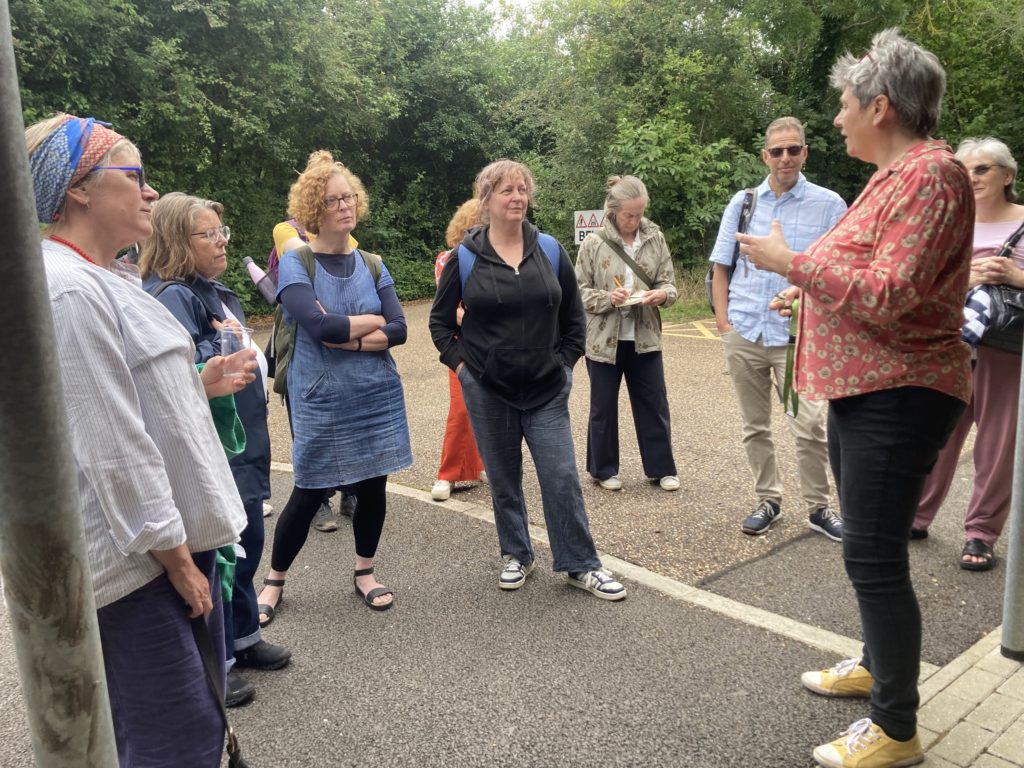
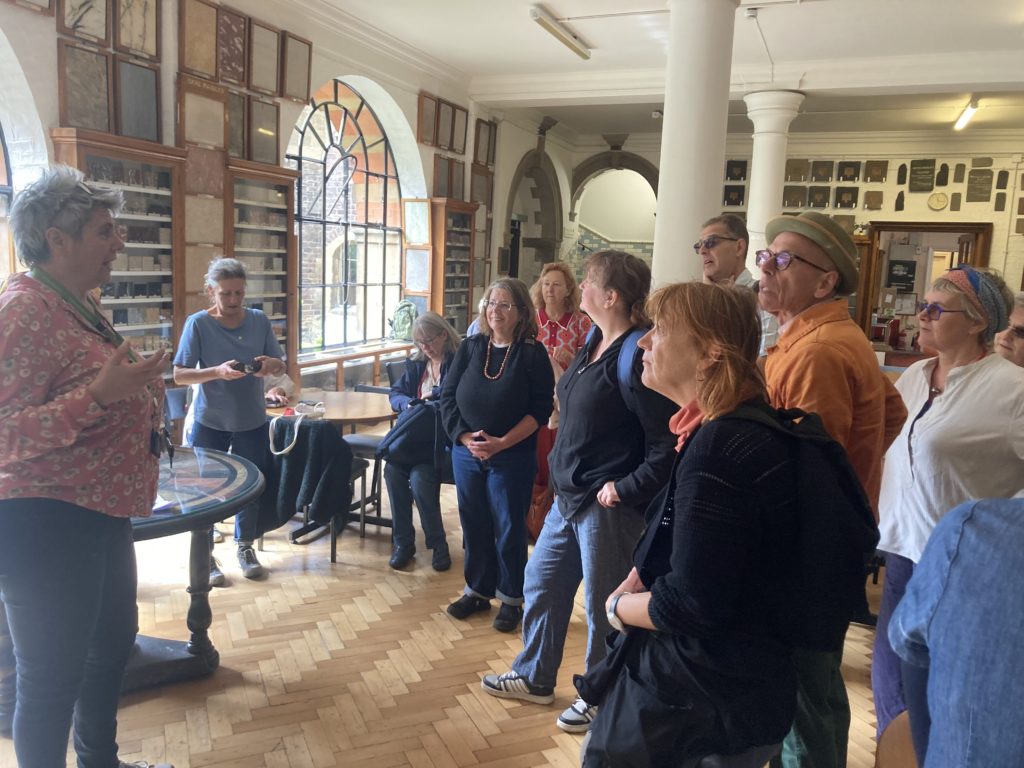
The Residency hosts: GroundWork Residency Consortium
There are three potential residency places, one relatively urban live-work space at GroundWork Gallery in King’s Lynn. It is fully accessible by public transport. One which is much more rural in the village of Great Cressingham, but with studio space, and other resident artists living communally. And Broomhill in Reepham which is completely rural with independent cabin – studio.
GroundWork Gallery (host Veronica Sekules)
Facilities: open-plan self-contained apartment on the middle floor within the gallery, consisting of- live-work space, kitchen, shower-room, bed space, balcony. Self-contained and private, but kitchen shared with the gallery during limited opening times. Clean-working studio space. Town centre location & bus and train public transport available.
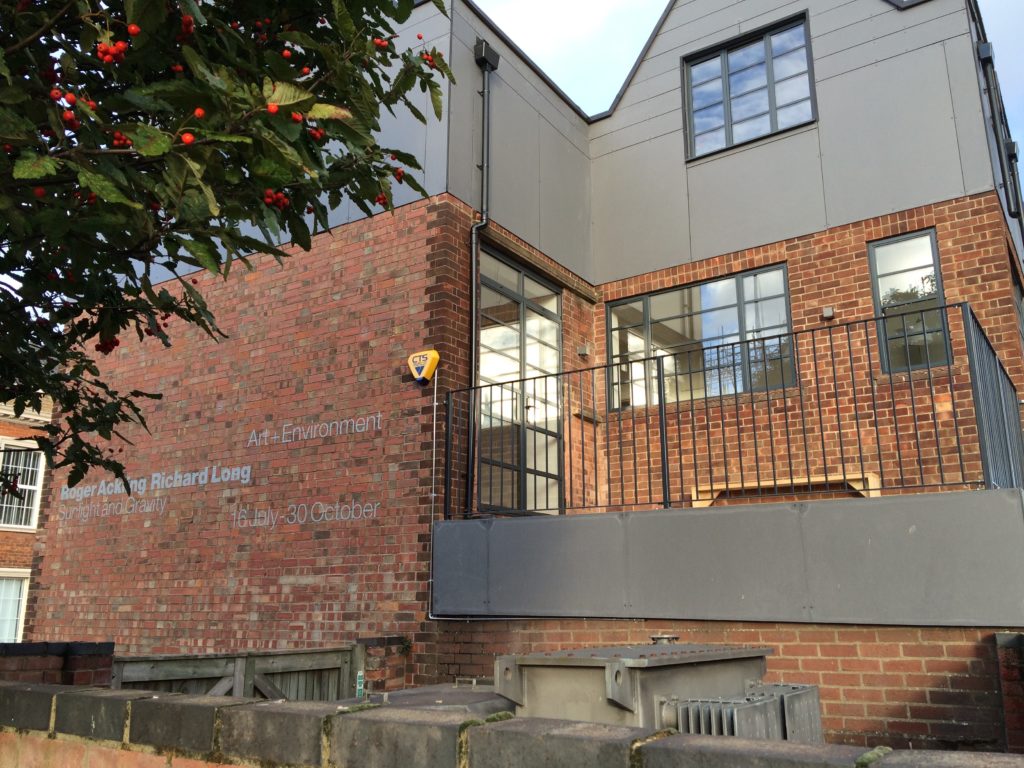
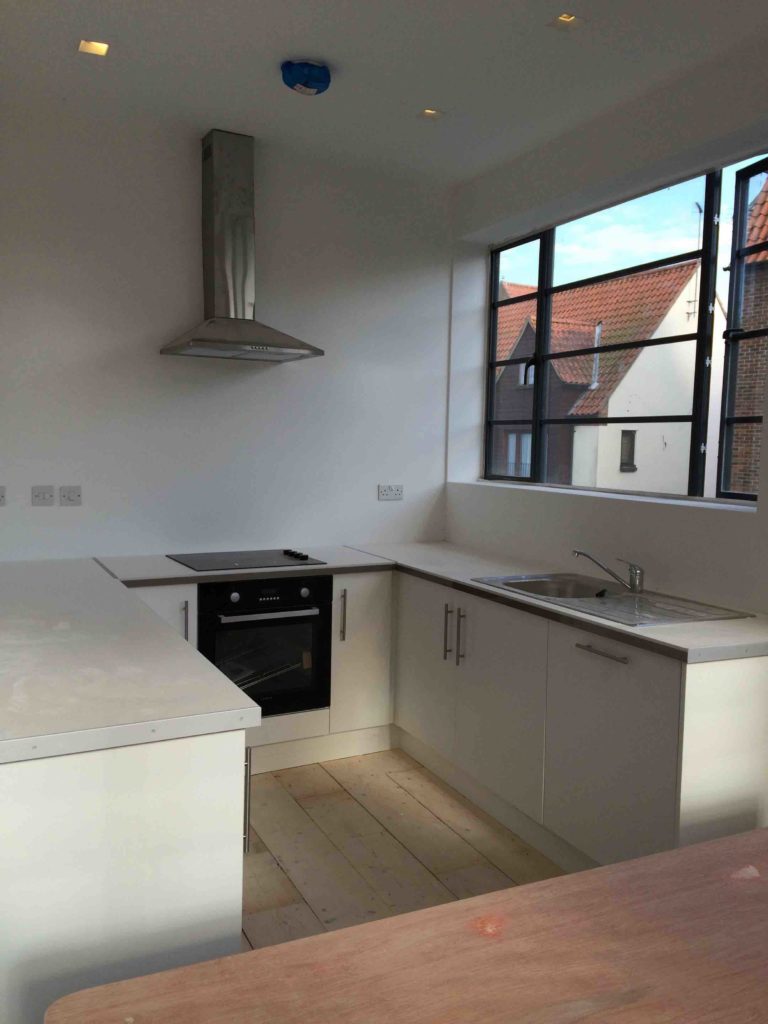
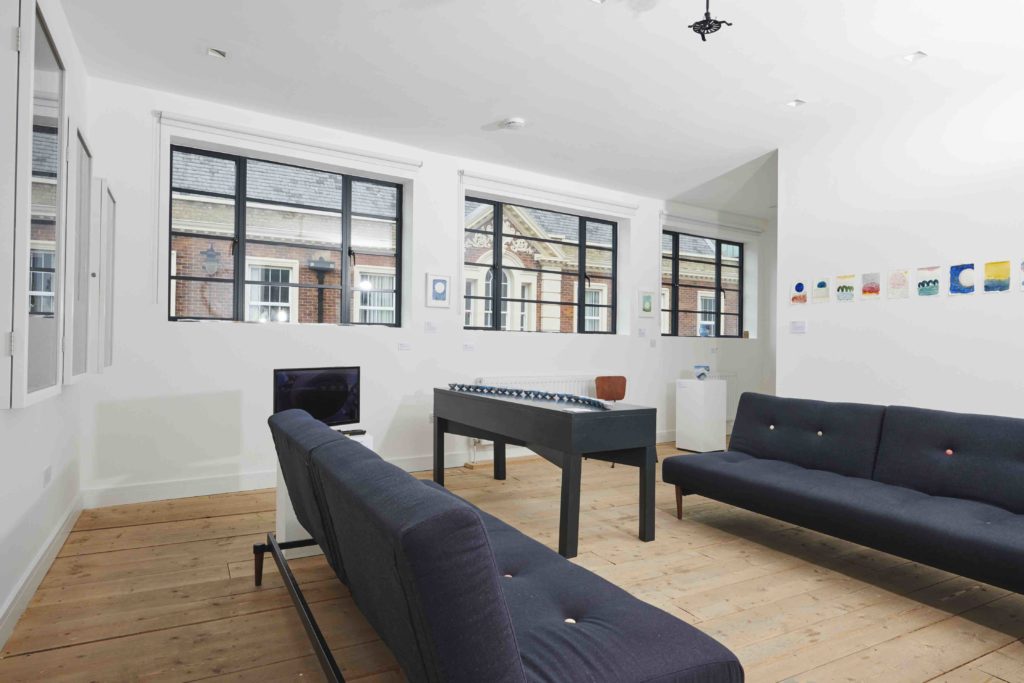
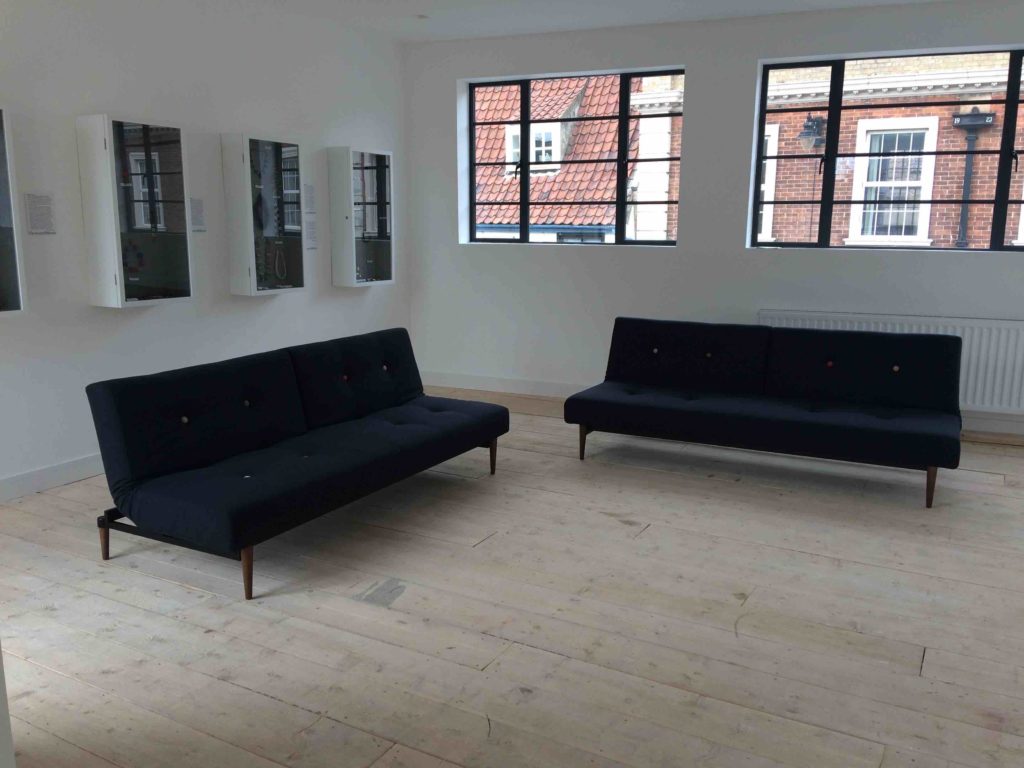
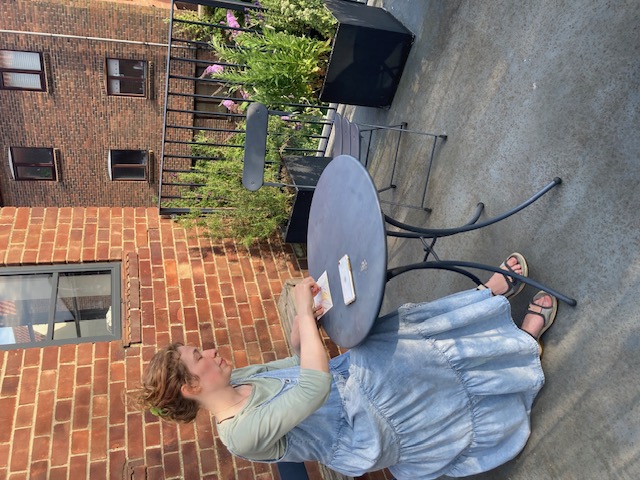
The Grange Projects, Great Cressingham (hosts John Plowman and Nicola Streeten)
Facilities: quiet location; open space grounds and landscape, and studio facilities ideal for making sculpture. Residents get a separate bedroom with otherwise communal living in a beautiful 18th century former rectory in a Norfolk village. (Access to a vehicle would be advisable for off site visits/meetings. However for non-drivers help with transportation will be offered if possible.’). https://www.thegrangeprojects.org/
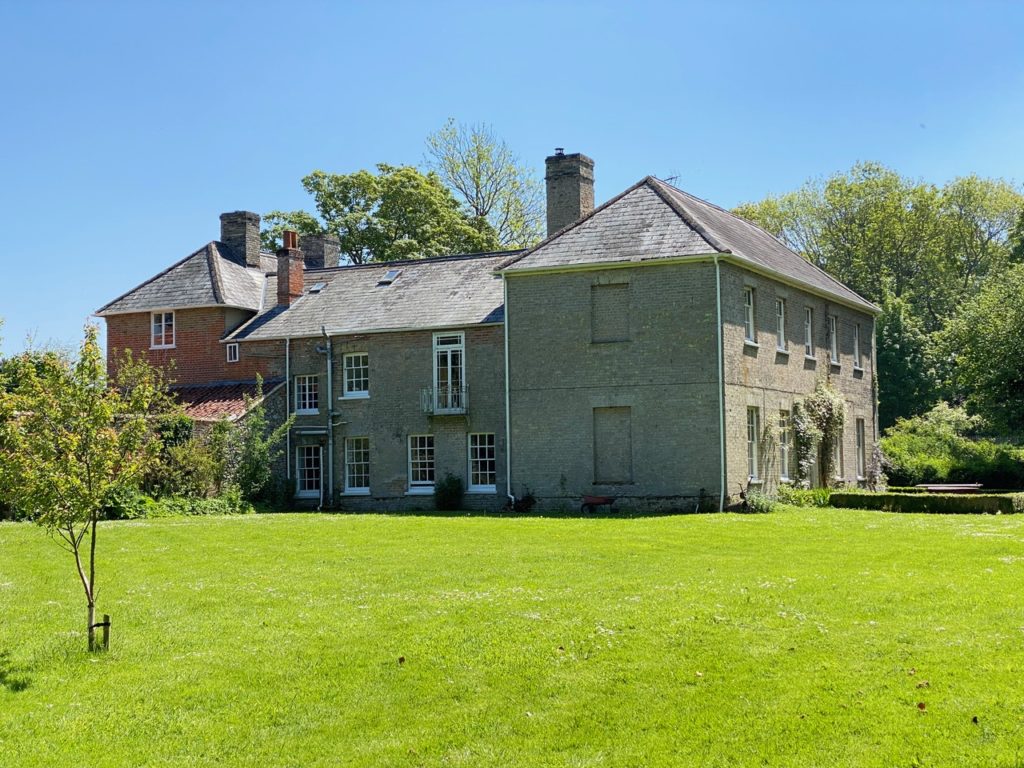
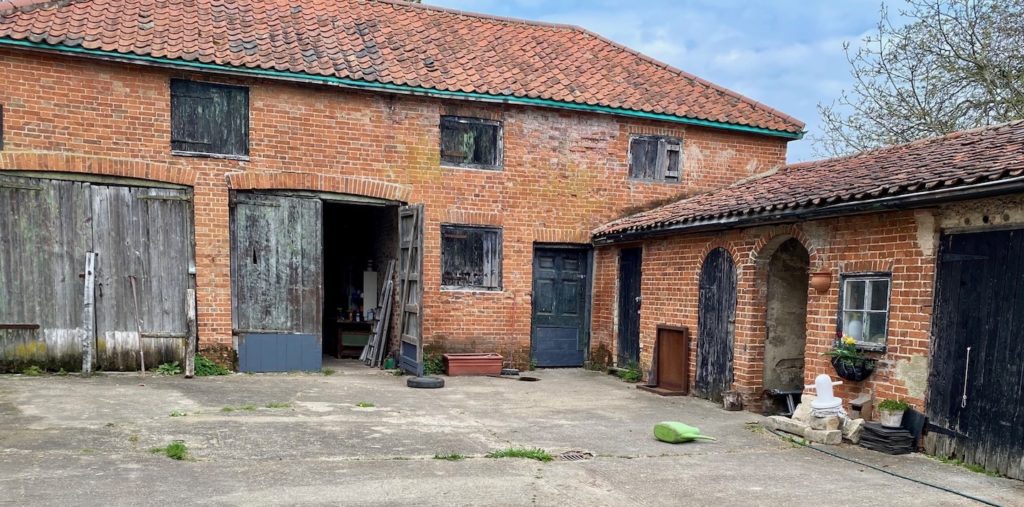
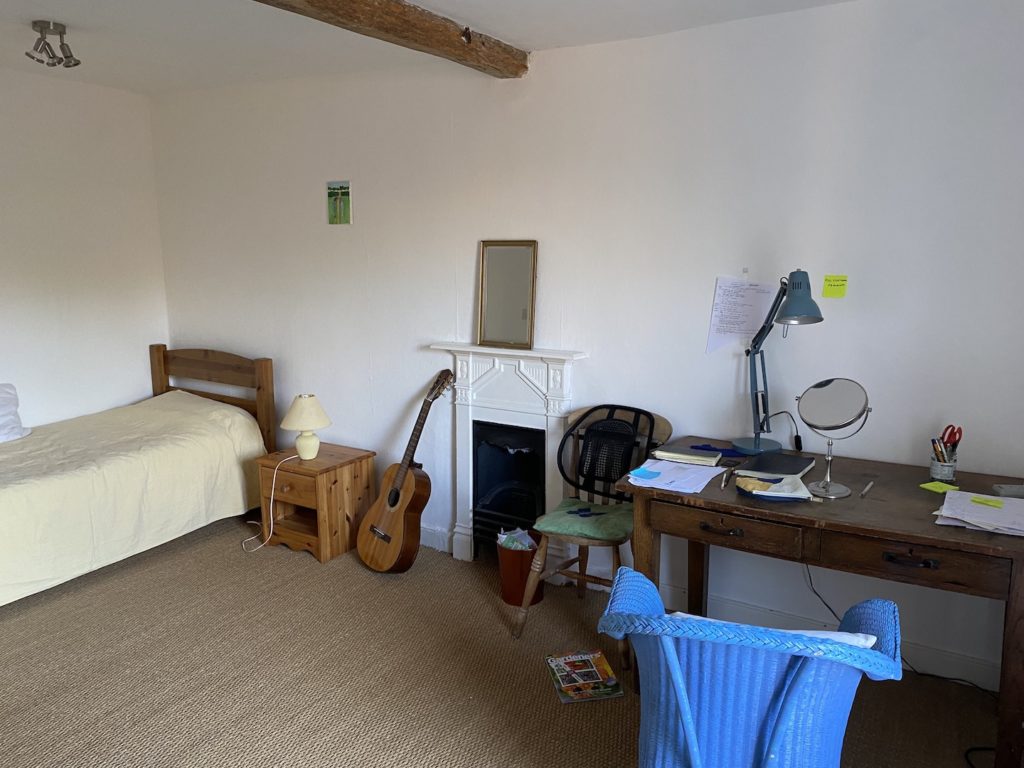
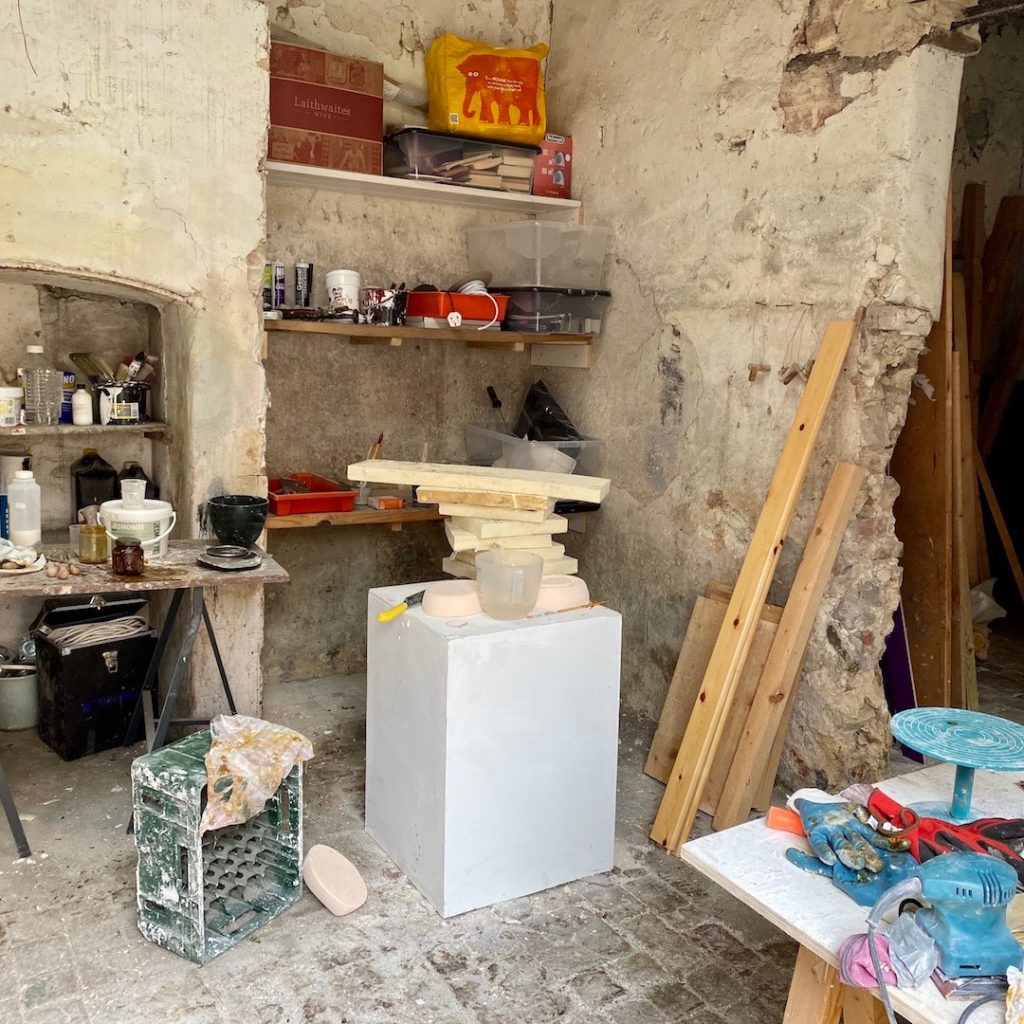
Broomhill, Reepham (host Helen Lindsay)
Facilities: self-contained studio space set within private and secluded land – consisting of a County Wildlife Site, wetland and woodland at the edge of a mid-Norfolk small town. Potential to live in the studio (facilities consist of veranda, double bed, heating, fridge, basic cooking, toilet a short walk from studio) or be hosted within the house, sharing meals. (Independent transport needed ideally – limited bus service available)
